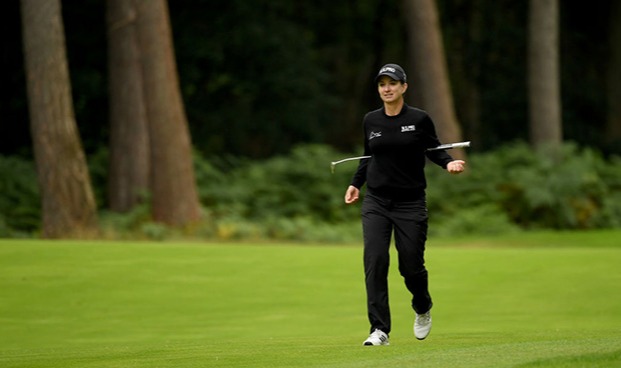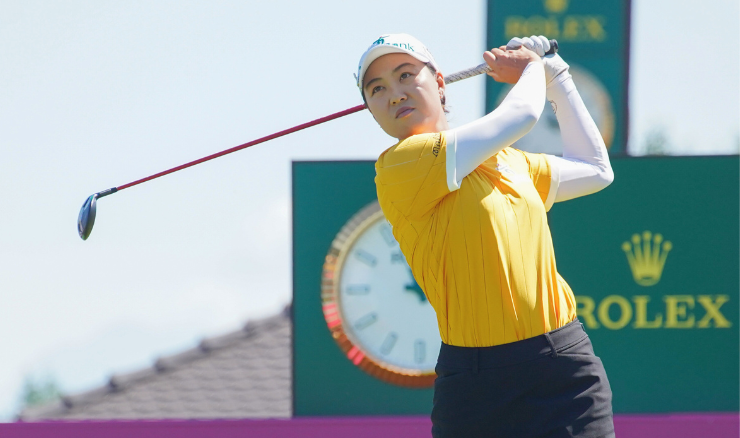01 Aug 2019 | Feature stories | Professional golf |
CLAYTON: The big venue conundrum
by Mike Clayton

While many lament the end of the men’s major championship schedule weeks earlier than usual, the finest women in the world are at Woburn this week for their British Open.
The three-course golf on the estate of the Duke of Bedford is expansive and an ideal venue for professional golf. The big English motorways heading north and south are close by, it’s not so far from the north of London to make the travel for large numbers unreasonable and there is all the necessary space for the arrangement of a significant championship.
Unlike The Open the women don’t always play the coastal links and it’s something of a pity because they are the best tests of championship play and while the course is a good one, it isn’t even the best of the three courses. It reminds of John Huggan’s oft-quoted line that the Ryder Cup at Gleneagles was held “on the fourth best course in Auchterarder”.
It was of course, slightly tongue-in cheek but from an architectural standpoint the King’s and Queen’s courses at Gleneagles are infinitely more charming and interesting than the Ryder Cup course across the road. Just as many cities have a “good” and a “bad” side of a river, so, too, is the narrow road at Gleneagles something of a divide between the new and the old and traditionalists usually come down on the side of the old.
The original course at Woburn – The Dukes – was built in the 1970s and the land is ideal for golf. The pine makes for a beautiful fairway border, the soil is sandy enough to make for both good construction and bouncy golf (assuming it’s not over-watered) and the undulations – dramatic in parts and subtle in others – make for sporty golf.
England is the single finest country to find great, wildly varied, accessible and affordable golf and, for the era of course architecture, The Dukes was the best course built in the country in the 1960s, 70s and 80s. It led to more and the country went on a craze of building expensive, well marketed – usually by attracting a European Tour event or even a Ryder Cup – courses. It was the hey-day of the famous professional golfer come architect, but the architectural irony is not one of the new courses matched the quality of the great old inland courses found all over England, such as Sunningdale, Walton Heath, Swinley Forest, Woking, Alwoodley, Ganton, Woodhall Spa or Notts.
Professional golf is, of course, much more about the “venue” than the course and there isn’t a hope of the Women’s British Open ever working at Swinley Forest or Woking, because they are both too small and not interested in the accompanying circus.
So Woburn, a great venue and a good course, is the test this week and it would hardly shock to suggest a one of the best Koreans will be the winner.
Jin Young Ko won the Evian last week (a schedule conspiring to put major championships in consecutive weeks) and also the ANA in April. Her countrywoman Jeongeun Lee6 won the US Open leaving only the amazing Hannah Green to break up the Korean domination of the season’s major championships.
Six Korean players are in the top dozen in the world, something making next year’s Olympic selection problematic because it eliminates at least two of the game’s best players. In contrast, the United States, for so long the dominant nation in women’s golf, has only Lexi Thompson and Women’s Australian Open winner Nelly Korda amongst the top dozen.
The fascination of the Koreans is how they continue to send out such great golfers on to the LPGA Tour when golf was a game barely known amongst the general populace only 30 years ago.
Se Ri Pak winning the US Open in 1998 was the rocket and two decades later we see what amounts to a near domination at the very top of the game. Seemingly the country’s best female athletes are attracted to golf before any other sport. Australia, in contrast, must have at least 20 sports a young woman is likely to try before a game she probably thinks “dull, boring and only played by old people”.
They couldn’t be more wrong, but it’s golf’s image here amongst those who don’t know any better.
Karrie Webb, an even better player than Pak, didn’t have the same effect because Australia was never going to become the golf-crazed country Korea did.
The game wasn’t new and exciting and kids had more options. Nor were we likely to find girls willing to obsessively hit balls at a driving range for eight hours a day, year on year – often before they ever played a golf course with grass on it.
Webb, a past champion and something of a semi-retired touring golfer, is playing this week, as are Minjee Lee (No.4 in the world) Green, Su Oh, Katherine Kirk, Sarah Kemp and Whitney Hillier, who made it through the Monday qualifier.
As Green showed at Hazletine, anything is possible with great play and the fortitude to manage the stress of the final 30 minutes.
If they can beat all the best Koreans, they will be in with a great chance. But it’s something much easier said than done.
Join our newsletter
Get weekly updates on news, golf tips and access to partner promotions.
Related News
Ruffels leads, Lee hunting more history at Evian Championship
Minjee Lee is chasing more major championship history after moving to within one stroke of the lead at the Amundi Evian Championship in France.
Roberts wins her way into US Women’s Amateur
Victoria’s Jazy Roberts has secured her place in next month’s US Women’s Amateur Championship by taking out the 123rd PNGA Women’s Amateur title.
No fears after tears for Kim at Evian Championship
Former amateur teammate Stephanie Kyriacou is confident Grace Kim will handle the heat of the last group of a major at the Amundi Evian Championship.


